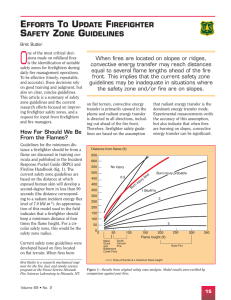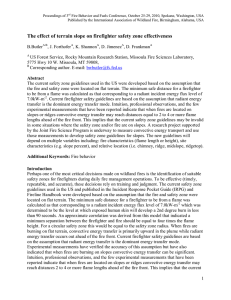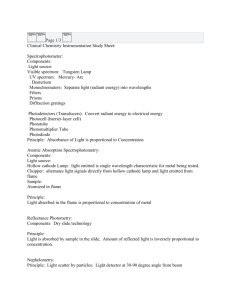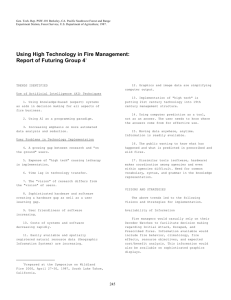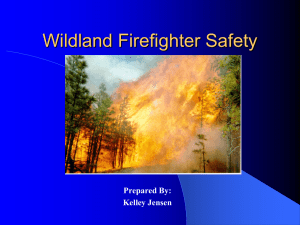Firefighter Safety Zone: The effect of terrain slope of separation distance
advertisement
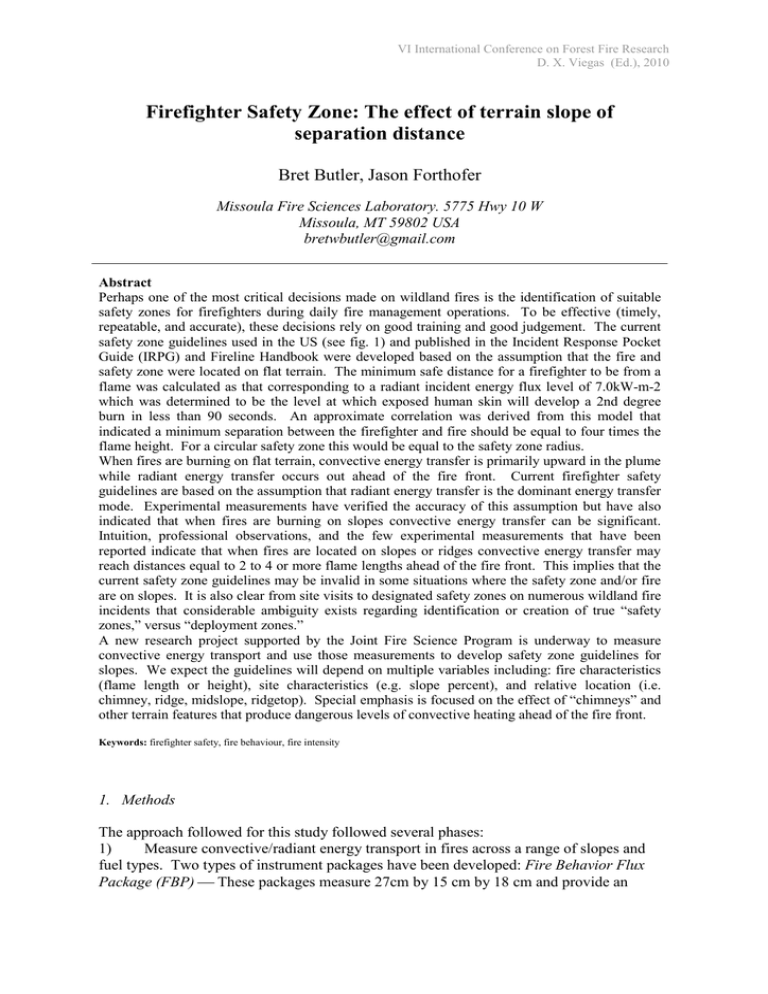
VI International Conference on Forest Fire Research D. X. Viegas (Ed.), 2010 Firefighter Safety Zone: The effect of terrain slope of separation distance Bret Butler, Jason Forthofer Missoula Fire Sciences Laboratory. 5775 Hwy 10 W Missoula, MT 59802 USA bretwbutler@gmail.com Abstract Perhaps one of the most critical decisions made on wildland fires is the identification of suitable safety zones for firefighters during daily fire management operations. To be effective (timely, repeatable, and accurate), these decisions rely on good training and good judgement. The current safety zone guidelines used in the US (see fig. 1) and published in the Incident Response Pocket Guide (IRPG) and Fireline Handbook were developed based on the assumption that the fire and safety zone were located on flat terrain. The minimum safe distance for a firefighter to be from a flame was calculated as that corresponding to a radiant incident energy flux level of 7.0kW-m-2 which was determined to be the level at which exposed human skin will develop a 2nd degree burn in less than 90 seconds. An approximate correlation was derived from this model that indicated a minimum separation between the firefighter and fire should be equal to four times the flame height. For a circular safety zone this would be equal to the safety zone radius. When fires are burning on flat terrain, convective energy transfer is primarily upward in the plume while radiant energy transfer occurs out ahead of the fire front. Current firefighter safety guidelines are based on the assumption that radiant energy transfer is the dominant energy transfer mode. Experimental measurements have verified the accuracy of this assumption but have also indicated that when fires are burning on slopes convective energy transfer can be significant. Intuition, professional observations, and the few experimental measurements that have been reported indicate that when fires are located on slopes or ridges convective energy transfer may reach distances equal to 2 to 4 or more flame lengths ahead of the fire front. This implies that the current safety zone guidelines may be invalid in some situations where the safety zone and/or fire are on slopes. It is also clear from site visits to designated safety zones on numerous wildland fire incidents that considerable ambiguity exists regarding identification or creation of true “safety zones,” versus “deployment zones.” A new research project supported by the Joint Fire Science Program is underway to measure convective energy transport and use those measurements to develop safety zone guidelines for slopes. We expect the guidelines will depend on multiple variables including: fire characteristics (flame length or height), site characteristics (e.g. slope percent), and relative location (i.e. chimney, ridge, midslope, ridgetop). Special emphasis is focused on the effect of “chimneys” and other terrain features that produce dangerous levels of convective heating ahead of the fire front. Keywords: firefighter safety, fire behaviour, fire intensity 1. Methods The approach followed for this study followed several phases: 1) Measure convective/radiant energy transport in fires across a range of slopes and fuel types. Two types of instrument packages have been developed: Fire Behavior Flux Package (FBP) These packages measure 27cm by 15 cm by 18 cm and provide an VI International Conference on Forest Fire Research D. X. Viegas (Ed.), 2010 insulated protective enclosure for datalogger, sensors and other electronics (fig 2). The standard instruments consist of radiometers that measure total and radiant energy fluxes, small-gauge thermocouples (nominally 0.13mm diameter wire) that sense flame and air temperature, and pitot-static type velocity probes that sense the magnitude and direction of airflow before, during, and after the fire passes. Video Acquisition Box (VID) Digital video imagery is an integral component of our field campaigns. Collecting video imagery not only allows us to observe the actual footage of the fire behavior, but also provides insight into our data analysis (fig 3). 2) Numerical Simulations: We used measurements to “tune” and validate theoretical heat transfer models. Fire growth was explored using existing spatial fire models like FARSITE and the newly available Wildland Fire Dynamics Simulator (WFDS) developed at the National Institute for Standards and Technology (NIST). Measured and modeled convective and radiant energy distributions around the fires was applied to human burn injury limits to determine appropriate separation distances and associated safety zone sizes. In the following we present the results of the analysis and implications for firefighter safety zones on slopes. The results will be used to develop guidelines for wildland firefighters in the US. Figure 1 --Results from original safety zone analysis. Model results were verified by comparison against past fires. VI International Conference on Forest Fire Research D. X. Viegas (Ed.), 2010 Figure 2--FPB system. Figure 3--Fire researchers installing video acquisition box. Slope = 60% Minimum Separation Distance Slope = 10% Flame Height Figure 4—Possible approach to safety zones on slopes guidelines.
